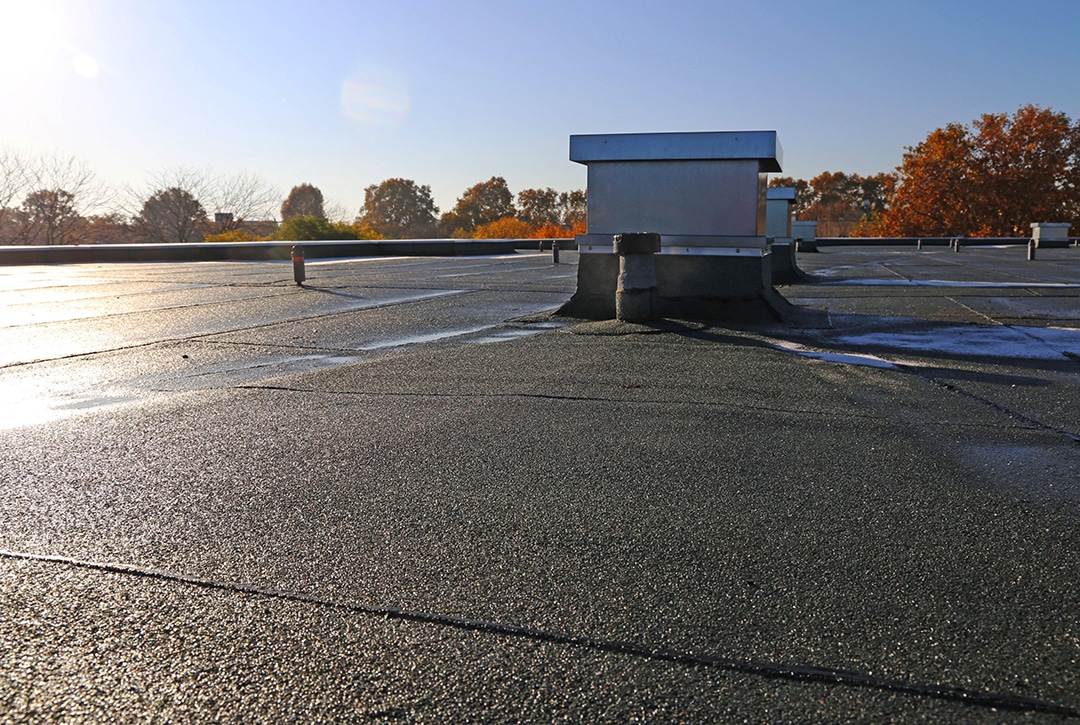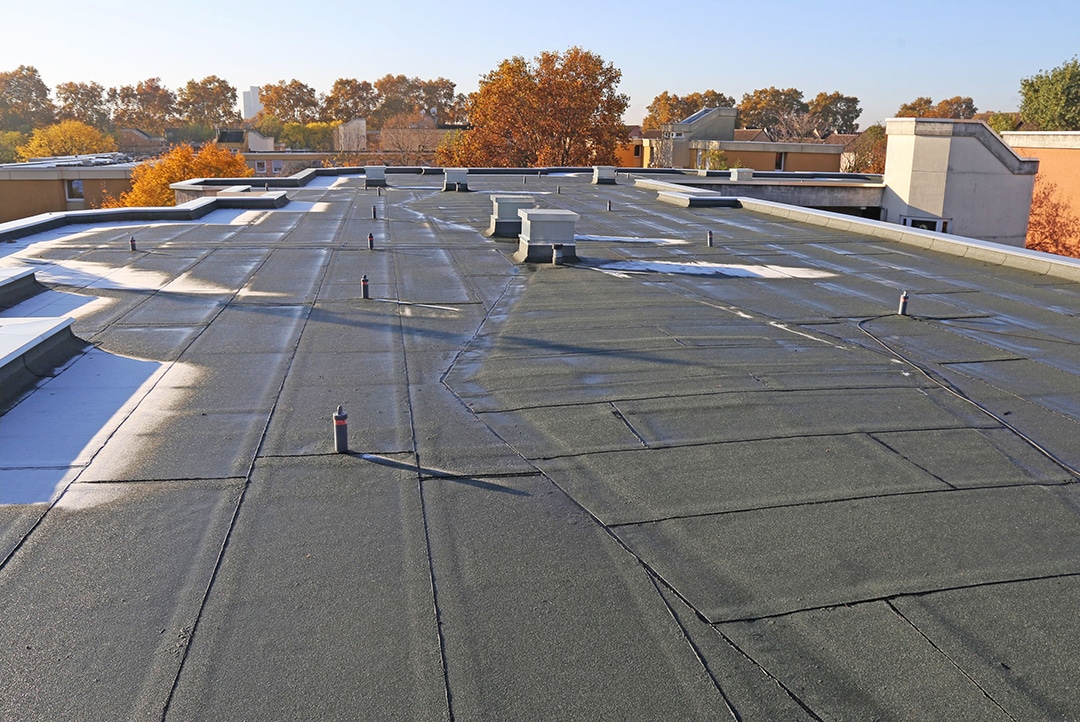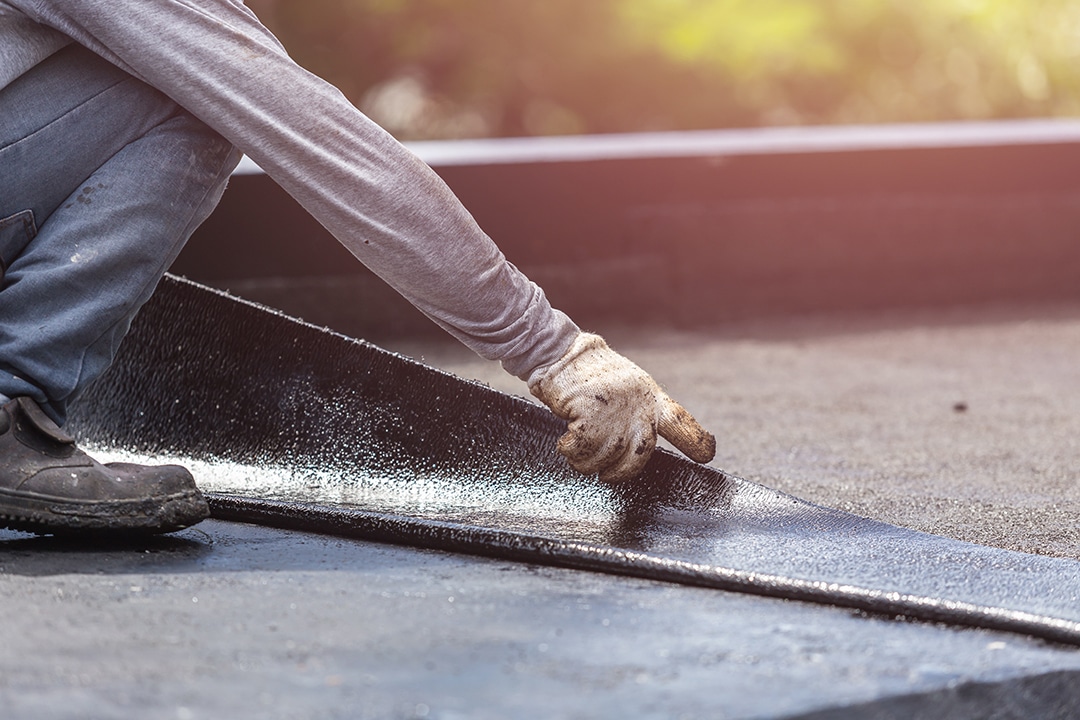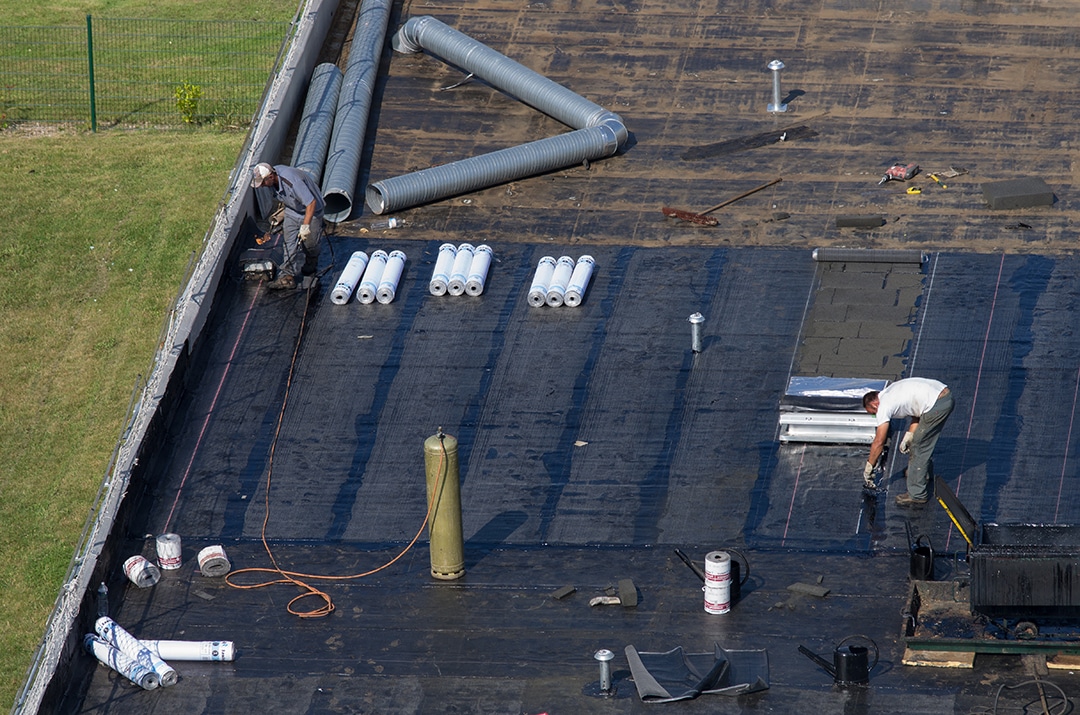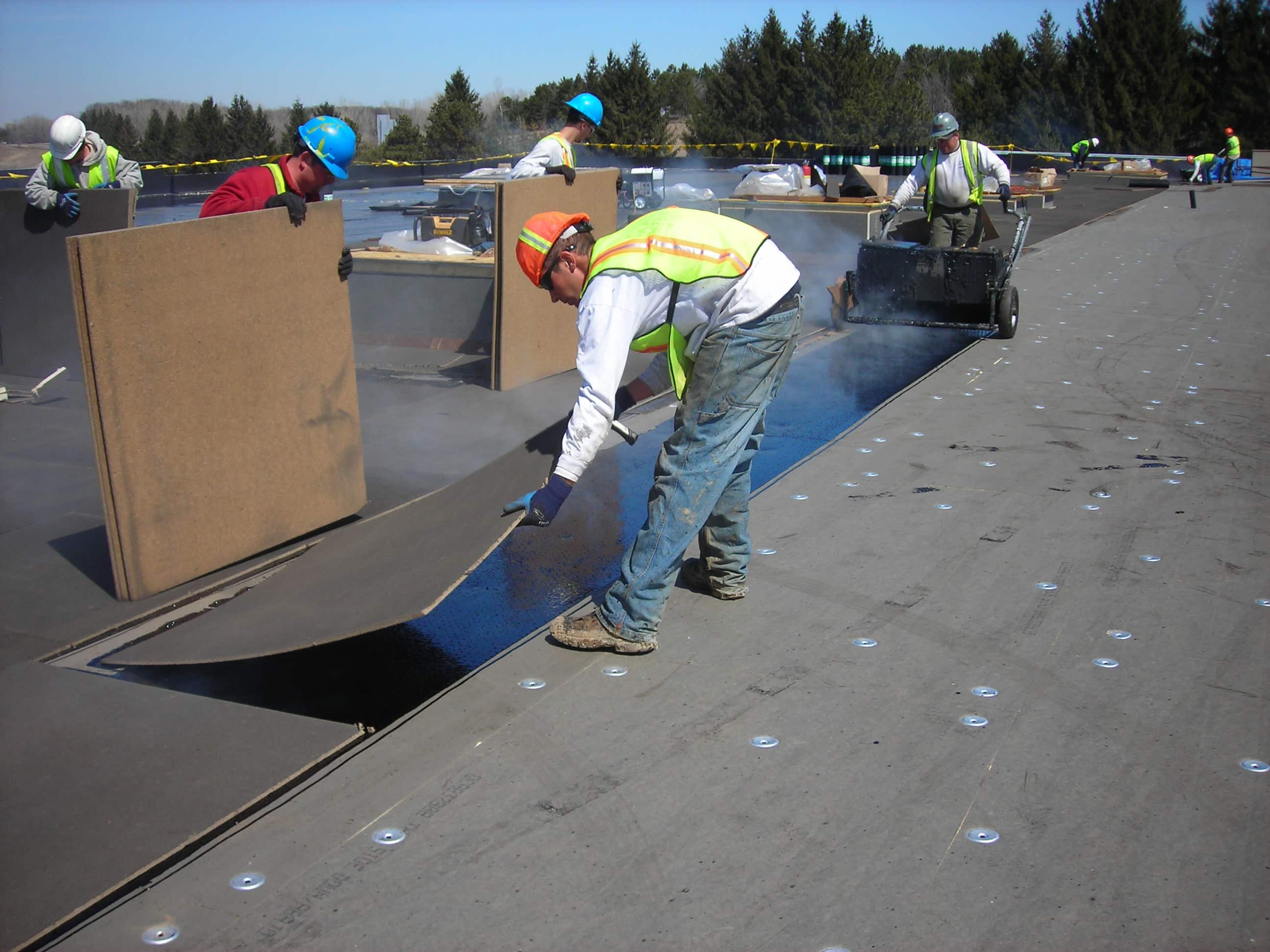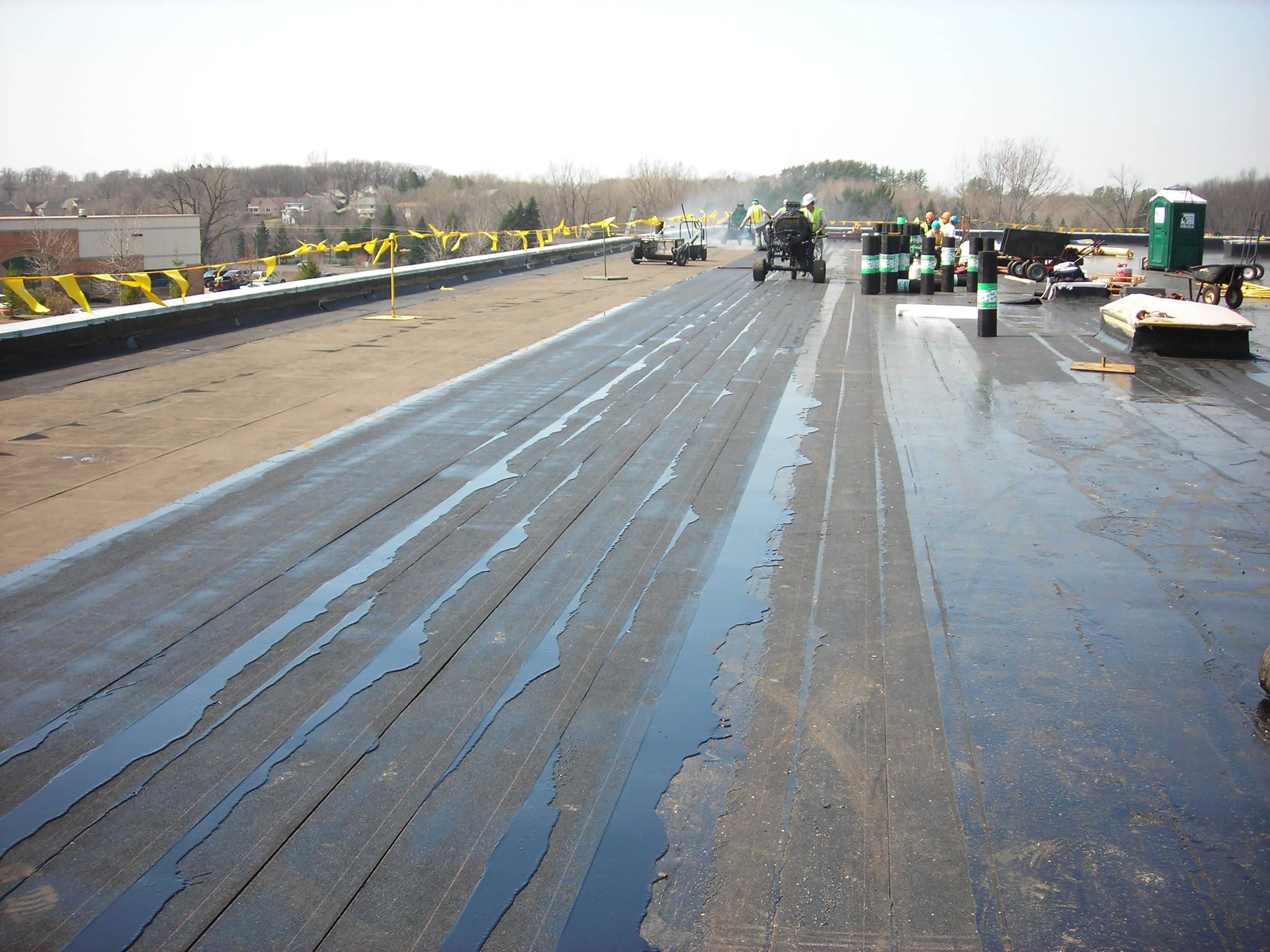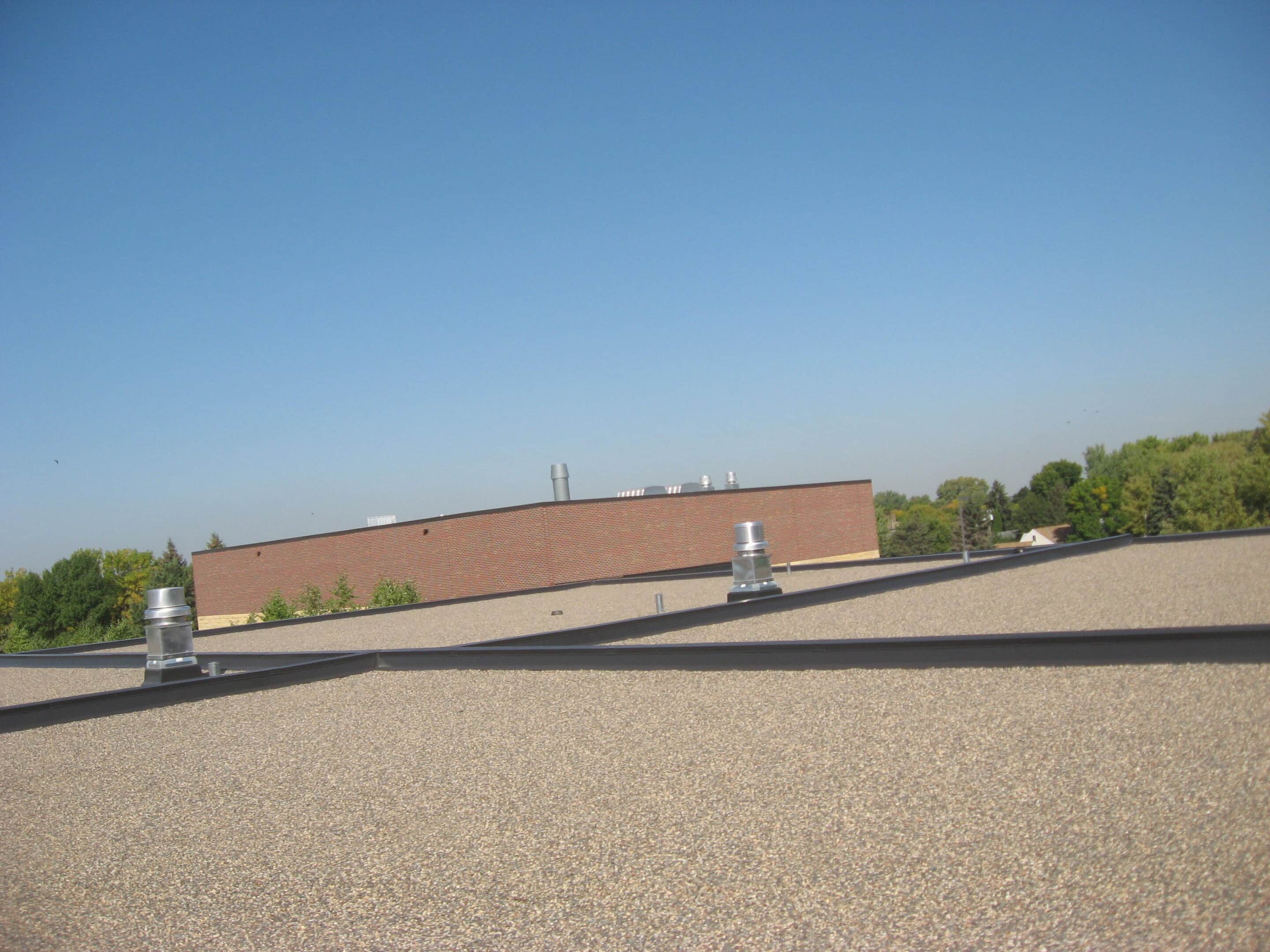Our Services
Built Up Roofing in Minneapolis, MN
What is Built Up Roofing?
A BUR roof is a type of flat or low-slope roofing system commonly used in commercial and industrial buildings. Built up roofs have been in use for over a century and are known for their durability and longevity.
It is made up of multi-layers of asphalt and fiberglass felts to provide a durable roofing membrane. BUR roofs consist of multiple layers of bitumen (a sticky, black, and viscous material) alternated with reinforcing materials such as fiberglass or organic felts. The bitumen serves as a waterproofing agent, while the reinforcing materials add strength and stability to the roof system. These layers are typically installed over a rigid insulation board to enhance energy efficiency and provide additional thermal protection.
Installation Process
The installation process of a BUR roof involves applying layers of bitumen and reinforcing materials using a hot asphalt or coal tar pitch. Roofers use a combination of mops, brushes, or mechanical spreaders to distribute the materials evenly and create a watertight membrane. Once the layers are in place, the roof is finished with a top layer of gravel or a reflective coating to protect against UV radiation and weathering.
Advantages of Built Up Roofing
Built up roofing is a popular roofing system because of several reasons. They are known for exceptional durability and longevity. It consists of multiple layers of asphalt and reinforcing materials, such as fiberglass or organic felts, which are hot-applied and then topped with a protective layer of gravel or a reflective coating. This multi-layered construction provides excellent resistance against weather elements, including UV rays, hail, and wind.
The expected lifespan of a built up roofing (BUR) system is typically between 25 to 40 years before it needs replacement. However, regular maintenance is necessary to ensure its longevity. The durability of a BUR roof is influenced by its design and installation quality. Each layer of the built up roofing, known as plies, contributes approximately five years to the overall lifespan of the roof. Consequently, incorporating more layers increases the roof’s longevity.
With Minnesota’s significant rainfall and occasional storms, effective waterproofing is crucial to prevent water infiltration and damage to commercial buildings. Built up roofing, with its multiple layers of bitumen, creates a seamless, watertight barrier, reducing the risk of leaks and water damage. This is especially important for flat or low-slope roofs commonly found in commercial buildings.
Disadvantages of Built Up Roofing
Installing the built up roofing system requires skilled labor and expertise. It involves heating and melting the bitumen to bond the layers together, which can be a time-consuming and labor-intensive process. Improper installation can lead to leaks and other issues.
Due to the increased cost of oil, asphalt built up roofs have become the most expensive roofing system to install. Asphalt is a crucial component in the manufacturing of built up roofs. It serves as the waterproofing and weatherproofing material that provides protection against the elements. However, asphalt is derived from petroleum, which means its price is closely tied to the cost of oil. As the price of oil rises, the cost of producing asphalt increases as well.
Your Trusted Built Up Roofing Contractors
It is our goal to exact excellence in all aspects of everything we do. When you choose Allweather Roof as your BUR contractor, you can trust that you’re getting a commercial roof which will protect against leaks and last for years to come. Request a Quote for more information.

